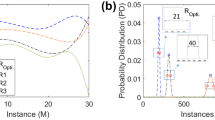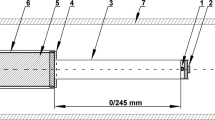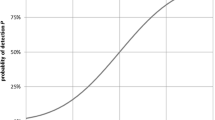Abstract
Time counting optimization in gamma-ray spectrometry was established using four HPGe detectors and four counting geometries. Deionized water samples with a mixed radioactive solution of 133Ba, 134Cs, 106Ru, 137Cs, 65Zn, and 60Co were prepared in volume from 0.1 to 3 L, and measured three times, for all detection systems, and for seven different counting times, ranging from 1,000 to 150,000 s. The obtained results were compared to the reference values from solutions with well-known activity concentrations samples, for minimum detectable amount (MDA) calculation. A counting time of 50,000 s was found to be generally sufficient to reach agreement between the preset and actual counting times.


Similar content being viewed by others
References
Currie, L.A.: Anal. Chem. 40, 586 (1968)
Tauhata, L., Vianna, M.E.C., Oliveira, A.E., Ferreira, A.C.M., Conceição, C.C.S.: Appl. Radiat. Isot. 56, 409 (2002)
InterwinnerTM 6.0 MCA Emulation, Data Acquisition and Analysis Software for Gamma and Alpha Spectroscopy IW-B32 2004, ORTEC, Oak Ridge, TN, USA. (2004)
Author information
Authors and Affiliations
Corresponding author
Rights and permissions
About this article
Cite this article
Nisti, M.B., Santos, A.J.G., Pecequilo, B.R.S. et al. Fast methodology for time counting optimization in gamma-ray spectrometry based on preset minimum detectable amounts. J Radioanal Nucl Chem 281, 283–286 (2009). https://doi.org/10.1007/s10967-009-0102-y
Received:
Published:
Issue Date:
DOI: https://doi.org/10.1007/s10967-009-0102-y




